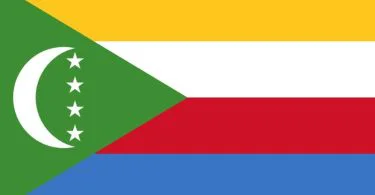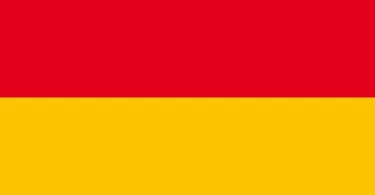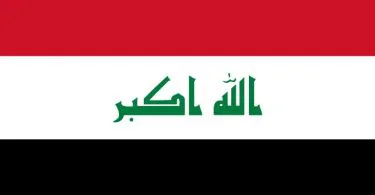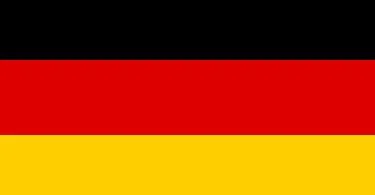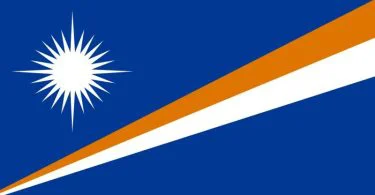Preamble 1. INTEGRAL HUMAN DEVELOPMENT 2. EQUALITY AND PARTICIPATION 3. NATIONAL SOVEREIGNTY AND SELF-RELIANCE 4. NATURAL RESOURCES AND ENVIRONMENT 5. PAPUA NEW GUINEAN WAYS Basic Rights Basic Social Obligations PART I. INTRODUCTORY Division 1. The Nation 1. THE INDEPENDENT STATE OF PAPUA NEW GUINEA 2. THE AREA OF PAPUA NEW GUINEA 3. NATIONAL SYMBOLS 4. NATIONAL CAPITAL DISTRICT 5. PROVINCES 6. DECLARATION OF LOYALTY 7. OATH OF ALLEGIANCE Division 2. Interpretation 8. PRINCIPLES OF INTERPRETATION PART II. THE NATIONAL LEGAL SYSTEM Division 1. The Laws of Papua New Guinea 9. THE LAWS 10. CONSTRUCTION OF WRITTEN LAWS Division 2. Constitutional Laws Subdivision A. Supreme Law 11. CONSTITUTION, ETC., AS SUPREME LAW 12. ORGANIC LAWS Subdivision B. Constitutional Alteration and Organic Laws 13. ALTERATIONS OF THE CONSTITUTION 14. MAKING OF ALTERATIONS TO THE CONSTITUTION AND ORGANIC LAWS 15. URGENT ALTERATIONS 16. INDIRECT ALTERATIONS 17. PRESCRIBED MAJORITY OF VOTES” Subdivision C. Constitutional Interpretation 18. ORIGINAL INTERPRETATIVE JURISDICTION OF THE SUPREME COURT 19. SPECIAL REFERENCES TO THE SUPREME COURT Division 3. Adoption, Reception and Development of Certain Laws 20. UNDERLYING LAW AND PRE-INDEPENDENCE STATUTES 21. PURPOSE OF SCHEDULE 2 Division 4. General 22. ENFORCEMENT OF THE CONSTITUTION 23. SANCTIONS 24. USE OF CERTAIN MATERIALS AS AIDS TO INTERPRETATION PART III. BASIC PRINCIPLES OF GOVERNMENT Division 1. National Goals and Directive Principles 25. IMPLEMENTATION OF THE NATIONAL GOALS AND DIRECTIVE PRINCIPLES Division 2. Leadership Code 26. APPLICATION OF DIVISION 2 27. RESPONSIBILITIES OF OFFICE 28. FURTHER PROVISIONS 29. PROSECUTION OF MISCONDUCT IN OFFICE 30. OTHER AUTHORITY 31. DISQUALIFICATIONS ON DISMISSAL Division 3. Basic Rights Subdivision A. Introductory 32. RIGHT TO FREEDOM 33. OTHER RIGHTS AND FREEDOMS, ETC 34. APPLICATION OF DIVISION 3 Subdivision B. Fundamental Rights 35. RIGHT TO LIFE 36. FREEDOM FROM INHUMAN TREATMENT 37. PROTECTION OF THE LAW Subdivision C. Qualified Rights General 38. GENERAL QUALIFICATIONS ON QUALIFIED RIGHTS 39. REASONABLY JUSTIFIABLE IN A DEMOCRATIC SOCIETY”, ETC 40. VALIDITY OF EMERGENCY LAWS 41. PROSCRIBED ACTS Rights of All Persons 42. LIBERTY OF THE PERSON 43. FREEDOM FROM FORCED LABOUR 44. FREEDOM FROM ARBITRARY SEARCH AND ENTRY 45. FREEDOM OF CONSCIENCE, THOUGHT AND RELIGION 46. FREEDOM OF EXPRESSION 47. FREEDOM OF ASSEMBLY AND ASSOCIATION 48. FREEDOM OF EMPLOYMENT 49. RIGHT TO PRIVACY Special Rights of Citizens 50. RIGHT TO VOTE AND STAND FOR PUBLIC OFFICE 51. RIGHT TO FREEDOM OF INFORMATION 52. RIGHT TO FREEDOM OF MOVEMENT 53. PROTECTION FROM UNJUST DEPRIVATION OF PROPERTY 54. SPECIAL PROVISION IN RELATION TO CERTAIN LANDS 55. EQUALITY OF CITIZENS 56. OTHER RIGHTS AND PRIVILEGES OF CITIZENS Subdivision D. Enforcement 57. ENFORCEMENT OF GUARANTEED RIGHTS AND FREEDOMS 58. COMPENSATION Division 4. Principles of Natural Justice 59. PRINCIPLES OF NATURAL JUSTICE 60. DEVELOPMENT OF PRINCIPLES 61. BASIC RIGHTS AND FREEDOMS 62. DECISIONS IN “DELIBERATE JUDGEMENT” Division 5. Basic Social Obligations 63. ENFORCEMENT OF THE BASIC SOCIAL OBLIGATIONS PART IV. CITIZENSHIP Division 1. Introductory 64. DUAL CITIZENSHIP Division 2. Acquisition of Citizenship 65. AUTOMATIC CITIZENSHIP ON INDEPENDENCE DAY 66. CITIZENSHIP BY DESCENT AND MARRIAGE 67. CITIZENSHIP BY NATURALIZATION 68. SPECIAL PROVISIONS RELATING TO NATURALIZATION 69. APPLICATION FOR NATURALIZATION Division 3. Loss and Regaining of Citizenship 70. AUTOMATIC LOSS OF CITIZENSHIP 71. ACTS DONE UNDER COMPULSION OF LAW 72. RENUNCIATION OF CITIZENSHIP 73. REGAINING CITIZENSHIP 74. LOSS AND REGAINING OF CITIZENSHIP BY CERTAIN CHILDREN Division 4. Citizenship Advisory Committee 75. THE COMMITTEE 76. FUNCTIONS OF THE COMMITTEE Division 5. General 77. SPECIAL PROVISIONS FOR CERTAIN PERSONS 78. EFFECT OF ADOPTION 79. PLACE OF BIRTH OF CERTAIN PERSONS 80. RESIDENCE” 81. CERTIFICATE AS TO CITIZENSHIP PART V. THE HEAD OF STATE Division 1. The Head of State 82. QUEEN AND HEAD OF STATE 83. QUEEN’S SUCCESSORS 84. PRECEDENCE 85. ROYAL STYLE AND TITLES Division 2. Functions, etc., of the Head of State 86. FUNCTIONS, ETC. Division 3. Appointment, etc., of Governor-General 87. QUALIFICATIONS FOR APPOINTMENT 88. APPOINTMENT TO OFFICE 89. ASSUMPTION OF OFFICE 90. DECLARATION OF LOYALTY, ETC. 91. NORMAL TERM OF OFFICE 92. RESIGNATION 93. DISMISSAL AND REMOVAL FROM OFFICE 94. SUSPENSION FROM OFFICE 95. ACTING GOVERNOR-GENERAL 96. TERMS AND CONDITIONS OF EMPLOYMENT Division 4. General 97. CONVEYANCE OF DECISIONS, ETC. 98. ACTS, ETC., OF THE HEAD OF STATE PART VI. THE NATIONAL GOVERNMENT Division 1. General Principles 99. STRUCTURE OF GOVERNMENT Division 2. The National Parliament Subdivision A. The Legislative Power 100. EXERCISE OF THE LEGISLATIVE POWER Subdivision B. Composition of the National Parliament 101. MEMBERSHIP 102. NOMINATED MEMBERS 103. QUALIFICATIONS FOR AND DISQUALIFICATIONS FROM MEMBERSHIP 104. NORMAL TERM OF OFFICE 105. GENERAL ELECTIONS 106. BY-ELECTIONS Subdivision C. The Speaker and the Deputy Speaker 107. OFFICES OF SPEAKER AND DEPUTY SPEAKER 108. FUNCTIONS OF THE SPEAKER AND DEPUTY SPEAKER Subdivision D. Powers, Privileges and Procedures 109. GENERAL POWER OF LAW-MAKING 110. CERTIFICATION AS TO MAKING OF LAWS 111. RIGHT TO INTRODUCE BILLS, ETC. 112. PRESIDING IN THE PARLIAMENT 113. QUORUM 114. VOTING IN THE PARLIAMENT 115. PARLIAMENTARY PRIVILEGES, ETC. 116. DISALLOWANCE OF SUBORDINATE LAWS 117. TREATIES, ETC. Subdivision E. The Committee System 118. PERMANENT PARLIAMENTARY COMMITTEES 119. CHAIRMEN AND DEPUTY CHAIRMEN 120. ROLES OF CHAIRMEN AND DEPUTY CHAIRMEN OF PERMANENT PARLIAMENTARY COMMITTEES 121. SESSIONAL COMMITTEES, SELECT COMMITTEES, ETC. 122. ARRANGEMENT OF PARLIAMENTARY BUSINESS IN RELATION TO COMMITTEES 123. MEMBERSHIP OF PARLIAMENTARY COMMITTEES Subdivision F. Calling, etc., of the Parliament 124. CALLING, ETC. Subdivision G. Electorates and Elections 125. ELECTORATES 126. ELECTIONS Subdivision H. Protection of Elections from Outside or Hidden Influence, and Strengthening of Political Parties 127. PURPOSES OF SUBDIVISION H 128. REGISTERED POLITICAL PARTY” 129. INTEGRITY OF POLITICAL PARTIES 130. INTEGRITY OF CANDIDATES 130A. Provisions relating to political parties Subdivision I. General 131. Section 131 was repealed by Constitutional Amendment No. 9) 132. THE PARLIAMENTARY SERVICE 133. STANDING ORDERS 134. PROCEEDINGS NON-JUSTICIABLE 135. QUESTIONS AS TO MEMBERSHIP, ETC. 136. VALIDATION OF ACTS OF THE PARLIAMENT Division 3. Special Instances of the Legislative Power 137. ACTS OF INDEMNITY Division 4. The National Executive Subdivision A. The National Executive and the Executive Power 138. VESTING OF THE EXECUTIVE POWER 139. THE NATIONAL EXECUTIVE 140. CONFERRING OF POWERS, ETC., OUTSIDE THE NATIONAL EXECUTIVE Subdivision B. The Ministry 141. NATURE OF THE MINISTRY: COLLECTIVE RESPONSIBILITY 142. THE PRIME MINISTER 143. ACTING PRIME MINISTER 144. OTHER MINISTERS 145. MOTIONS OF NO CONFIDENCE 146. RESIGNATION 147. NORMAL TERM OF OFFICE 148. FUNCTIONS, ETC., OF MINISTERS Subdivision C. The National Executive Council 149. THE NATIONAL EXECUTIVE COUNCIL 150. THE SECRETARY TO THE NATIONAL EXECUTIVE COUNCIL Subdivision D. The Power of Mercy 151. GRANT OF PARDON, ETC. 152. ADVISORY COMMITTEE ON THE POWER OF MERCY Subdivision E. General 153. VALIDITY OF EXECUTIVE ACTS Division 5. The Administration of Justice Subdivision A. General Structure and Principles of the National Justice Administration 154. THE NATIONAL JUSTICE ADMINISTRATION 155. THE NATIONAL JUDICIAL SYSTEM 156. THE LAW OFFICERS 157. INDEPENDENCE OF THE NATIONAL JUDICIAL SYSTEM Subdivision B. The Judicial Power 158. EXERCISE OF THE JUDICIAL POWER 159. TRIBUNALS, ETC., OUTSIDE THE NATIONAL JUDICIAL SYSTEM Subdivision C. The Supreme Court of Justice 160. ESTABLISHMENT OF THE SUPREME COURT 161. COMPOSITION OF THE SUPREME COURT 162. JURISDICTION OF THE SUPREME COURT Subdivision D. The National Court of Justice 163. ESTABLISHMENT OF THE NATIONAL COURT 164. COMPOSITION OF THE NATIONAL COURT 165. ACTING JUDGES 166. JURISDICTION OF THE NATIONAL COURT 167. ASSISTANT JUDGES Subdivision E. Appointment, etc., of Judges 168. QUALIFICATIONS 169. APPOINTMENT, ETC., OF THE CHIEF JUSTICE 170. APPOINTMENT OF OTHER JUDGES 171. SENIORITY OF JUDGES Subdivision F. Inferior Courts, the Magisterial Service, etc. 172. ESTABLISHMENT OF OTHER COURTS 173. ESTABLISHMENT OF THE MAGISTERIAL SERVICE 174. MAGISTRATES, ETC., OUTSIDE THE MAGISTERIAL SERVICE 175. THE CHIEF MAGISTRATE Subdivision G. The Public Prosecutor and the Public Solicitor 176. ESTABLISHMENT OF OFFICES 177. FUNCTIONS OF THE PUBLIC PROSECUTOR AND THE PUBLIC SOLICITOR Subdivision H. Removal from Office of Senior Judicial and Legal Office-holders 178. GROUNDS OF REMOVAL 179. REMOVAL FROM OFFICE OF CHIEF JUSTICE 180. REMOVAL FROM OFFICE OF OTHER JUDGES, ETC. 181. CONSTITUTION, ETC., OF TRIBUNALS 182. SUSPENSION Subdivision I. The Judicial and Legal Services Commission 183. ESTABLISHMENT OF THE COMMISSION Subdivision J. Miscellaneous 184. RULES OF COURT 185. LACK OF PROCEDURAL PROVISION 186. JURIES AND ASSESSORS 187. REPORTS BY JUDGES PART VIA. PROVINCIAL GOVERNMENTS AND LOCAL-LEVEL GOVERNMENTS 187A. PROVINCIAL GOVERNMENTS AND LOCAL-LEVEL GOVERNMENTS SYSTEM 187B. GRANT OF PROVINCIAL GOVERNMENT AND LOCAL-LEVEL GOVERNMENT 187C. CONSTITUTION, FUNCTIONS, ETC., OF PROVINCIAL GOVERNMENTS AND LOCAL-LEVEL GOVERNMENTS 187D. INCONSISTENCY AND JUSTICIABILITY OF PROVINCIAL LAWS AND LOCAL-LEVEL LAWS 187E. SUSPENSION OF PROVINCIAL GOVERNMENTS AND LOCAL-LEVEL GOVERNMENTS 187F. RE-ESTABLISHMENT OF PROVINCIAL GOVERNMENTS AND LOCAL-LEVEL GOVERNMENTS 187G. GRADATIONS OF PROVINCIAL GOVERNMENTS AND LOCAL-LEVEL GOVERNMENTS 187H. NATIONAL ECONOMIC AND FISCAL COMMISSION 187I. LOCAL AND VILLAGE GOVERNMENTS 187J. REPORTS ON PROVINCIAL GOVERNMENTS AND LOCAL-LEVEL GOVERNMENTS PART VII. THE STATE SERVICES Division 1. Introductory 188. ESTABLISHMENT OF THE STATE SERVICES 189. CIVILIAN CONTROL Division 2. The Public Services Commission 190. ESTABLISHMENT OF THE COMMISSION 191. FUNCTIONS OF THE COMMISSION 192. INDEPENDENCE OF THE COMMISSION 193. APPOINTMENT TO CERTAIN OFFICES 194. PERSONNEL MATTERS Division 3. The State Services Generally 195. ORGANIZATION, ETC., OF THE STATE SERVICES Division 4. Special Provisions in Relation to the Police Force 196. CONTROL OF THE POLICE FORCE 197. FUNCTIONS OF THE POLICE FORCE 198. COMMISSIONER OF POLICE 199. OTHER FORCES Division 5. Special Provisions in Relation to the Defence Force 200. RAISING UNAUTHORIZED FORCES 201. CONTROL OF THE DEFENCE FORCE 202. FUNCTIONS OF THE DEFENCE FORCE 203. APPLICATION OF GENERAL LAW 204. CALL-OUT IN AID TO THE CIVIL POWER 205. ACTIVE SERVICE 206. VISITING FORCES Division 6. Special Provisions relating to Disciplined Forces 207. DEFINITION OF “DISCIPLINED FORCE” 208. PROTECTION OF MEMBERS OF DISCIPLINED FORCES PART VIIA. REGULATORY STATUTORY AUTHORITIES 208A. DECLARATION OF REGULATORY STATUTORY AUTHORITIES 208B. APPOINTMENTS TO CERTAIN OFFICES OF REGULATORY STATUTORY AUTHORITIES PART VIII. SUPERVISION AND CONTROL Division 1. Public Finances Subdivision A. The Parliament and Finance 209. PARLIAMENTARY RESPONSIBILITY 210. EXECUTIVE INITIATIVE 211. EXECUTIVE INITIATIVE 212. REVENUE AND EXPENDITURE WITHOUT PRIOR APPROVAL Subdivision AA. The Sovereign Wealth Fund 212A. SOVEREIGN WEALTH FUND Subdivision B. The Auditor-General 213. ESTABLISHMENT OF THE OFFICE OF AUDITOR-GENERAL 214. FUNCTIONS OF THE AUDITOR-GENERAL Subdivision C. The Public Accounts Committee 215. ESTABLISHMENT OF THE COMMITTEE 216. FUNCTIONS OF THE COMMITTEE Division 1A. Salaries and Remuneration Commission 216A. THE SALARIES AND REMUNERATION COMMISSION Division 2. The Ombudsman Commission 217. THE OMBUDSMAN COMMISSION 218. PURPOSES OF THE COMMISSION 219. FUNCTIONS OF THE COMMISSION 219A. OMBUDSMAN COMMEISSION COMMITTEE 220. REPORTS BY THE COMMISSION Division 3. The Independent Commission Against Corruption 220A. INTERPRETATION 220B. THE INDEPENDENT COMMISSION AGAINST CORRUPTION 220C. PURPOSES OF THE COMMISSION 220D. FUNCTIONS OF THE COMMISSION 220E. POWERS ETC., OF THE COMMISSION 220F. INDEPENDENCE OF THE COMMISSION 220G. OVERSIGHT OF THE COMMISSION 220H. REPORTS BY THE COMMISSION PART IX. CONSTITUTIONAL OFFICE-HOLDERS AND CONSTITUTIONAL INSTITUTIONS 221. DEFINITIONS 222. OTHER PROVISIONS RELATING TO CONSTITUTIONAL OFFICE-HOLDERS AND CONSTITUTIONAL INSTITUTIONS 223. GENERAL PROVISIONS FOR CONSTITUTIONAL OFFICE-HOLDERS 224. SPECIAL PROVISION FOR CONSTITUTIONAL INSTITUTIONS 225. PROVISION OF FACILITIES, ETC. PART X. EMERGENCY POWERS Division 1. Introductory 226. DEFINITIONS Division 2. Periods of Declared National Emergency 227. DECLARATION OF WAR 228. DECLARATION OF NATIONAL EMERGENCY 229. TERMINATION OF PERIODS OF DECLARED NATIONAL EMERGENCY Division 3. Emergency Measures 230. EMERGENCY ACTS 231. EMERGENCY REGULATIONS 232. EMERGENCY ORDERS 233. CONTENT, OPERATIONS, ETC., OF EMERGENCY ORDERS 234. RELEASE FROM CUSTODY ON EXPIRY, ETC., OF EMERGENCY REGULATIONS 235. CUSTODY OF MEMBERS OF PARLIAMENT UNDER EMERGENCY REGULATIONS OR IN INTERNMENT 236. REVOCATION, ETC., OF EMERGENCY LAWS, ETC. 237. AUTOMATIC TERMINATION OF EMERGENCY LAWS, ETC. 238. EXTENSION OF EMERGENCY ACTS Division 4. Parliamentary Supervision and Control 239. PARLIAMENTARY CONTROL 240. EMERGENCY COMMITTEES 241. TEMPORARY EMERGENCY COMMITTEES 242. FUNCTIONS, ETC., OF EMERGENCY COMMITTEES 243. PRIORITY OF EMERGENCY BUSINESS IN PARLIAMENT Division 5. Internment 244. LAWS PROVIDING FOR INTERNMENT 245. INTERNMENT Division 6. Miscellaneous 246. EXTENSION OF TENURE OF PARLIAMENT AND GOVERNOR-GENERAL PART XI. MISCELLANEOUS 247. LEGAL CAPACITY OF THE INDEPENDENT STATE OF PAPUA NEW GUINEA 248. VESTING OF RIGHTS AND LIABILITIES OF FORMER GOVERNMENT 249. DECLARATIONS BY CERTAIN OFFICE-HOLDERS 250. MAKING OF DECLARATION OF LOYALTY, ETC. 251. TAKING CERTAIN OATHS, ETC., BY NON-CITIZENS 252. THE NATIONAL GAZETTE 253. SLAVERY, ETC. 254. FILLING OF OFFICES, ETC. 255. CONSULTATION 256. REPORTS BY PUBLIC OFFICE-HOLDERS, ETC. 257. PROOF OF ACTS OF THE CONSTITUENT ASSEMBLY 258. CONSTITUTIONAL REGULATIONS 259. INDEPENDENT TRIBUNALS PART XII. CONSTITUTIONAL REVIEW 260. GENERAL CONSTITUTIONAL COMMISSION 261. INTERIM CONSTITUTIONAL COMMISSION 262. SUBORDINATE COMMISSIONS AND COMMITTEES PART VIII. IMMEDIATE AND TRANSITIONAL PROVISIONS 264. EFFECT OF PART XIII 265. DISSOLUTION OF THE CONSTITUENT ASSEMBLY 266. PROVISIONAL LAWS 267. TRANSITIONAL LAWS 268. FIRST GOVERNOR-GENERAL 269. FIRST PARLIAMENT, ELECTORATES, ETC. 270. FIRST MINISTRY 271. FIRST JUDGES 272. OATHS, AFFIRMATION, ETC. 273. TREATIES APPLYING BEFORE INDEPENDENCE 274. COMPOSITION OF CERTAIN CONSTITUTIONAL INSTITUTIONS 275. CHAIRMANSHIP OF TRIBUNAL TO REVIEW INTERNMENTS PART XIV. BOUGAINVILLE GOVERNMENT AND BOUGAINVILLE REFERENDUM Division 1. Preliminary 276. APPLICATION OF THIS PART 277. NON-APPLICATION OF PART VIA 278. INTERPRETATION Division 2. Arrangements for the Establishment of Bougainville Government 279. AUTONOMOUS GOVERNMENT FOR BOUGAINVILLE 280. BOUGAINVILLE CONSTITUTION 281. BOUGAINVILLE CONSTITUTIONAL COMMISSION 282. STRUCTURES OF BOUGAINVILLE GOVERNMENT TO BE CONTAINED IN BOUGAINVILLE CONSTITUTION 283. CONSULTATION WITH NATIONAL EXECUTIVE COUNCIL 284. BOUGAINVILLE CONSTITUENT ASSEMBLY 285. ENDORSEMENT OF BOUGAINVILLE CONSTITUTION 286. LEGAL STATUS OF BOUGAINVILLE CONSTITUTION 287. AMENDMENT OF BOUGAINVILLE CONSTITUTION Division 3. Division of Functions and Powers between National Government and Bougainville Government and transfer of functions and powers to Bougainville Government 288. DIVISION OF FUNCTIONS AND POWERS OF GOVERNMENT 289. FUNCTIONS AND POWERS OF THE NATIONAL GOVERNMENT 290. FUNCTIONS AND POWERS AVAILABLE TO THE BOUGAINVILLE GOVERNMENT 291. FUNCTIONS AND POWERS OF THE NATIONAL GOVERNMENT AND OF THE BOUGAINVILLE GOVERNMENT IN RELATION TO CRIMINAL LAW 292. SUBJECTS NOT SPECIFIED IN SECTIONS 289, 290 AND 291 293. INTERNATIONAL OBLIGATIONS, ETC., OF THE STATE IN RESPECT OF THE POWERS AND FUNCTIONS OF THE BOUGAINVILLE GOVERNMENT 294. FUNCTIONS AND POWERS OF THE BOUGAINVILLE GOVERNMENT ON ESTABLISHMENT AND WITHIN 12 MONTHS THEREAFTER 295. PROCESS FOR TRANSFER OF FUNCTIONS AND POWERS 296. RELATIONSHIP OF NATIONAL AND BOUGAINVILLE LAWS 297. MANNER OF IMPLEMENTATION OF TRANSFER OF FUNCTIONS AND POWERS 298. NATIONAL GOVERNMENT ASSETS AND LAND 299. TRANSFER OR DELEGATION OF FUNCTIONS AND POWERS Division 4. Powers and Functions of the Bougainville Government and Matters relative thereto affecting other provisions of this Constitution Subdivision A. Preliminary 300. BOUGAINVILLE CONSTITUTION AND BOUGAINVILLE LAWS TO FORM PART OF THE LAWS OF PAPUA NEW GUINEA 301. SPECIAL REFERENCES TO THE SUPREME COURT Subdivision B. Code of Conduct, etc., and Leadership Code 302. CODE OF CONDUCT, ETC., AND LEADERSHIP CODE Subdivision C. Rights and Freedoms 303. QUALIFICATIONS ON QUALIFIED RIGHTS 304. GUARANTEED RIGHTS AND FREEDOMS Subdivision D. Administration of Justice 305. OPERATION OF NATIONAL JUDICIAL SYSTEM IN BOUGAINVILLE 306. ESTABLISHMENT OF COURTS IN BOUGAINVILLE 307. ESTABLISHMENT OF TRIBUNALS IN BOUGAINVILLE 308. JURISDICTION OF BOUGAINVILLE COURTS 309. APPOINTMENT OF JUDGES, ETC. Subdivision E. Bougainville Government Services 310. BOUGAINVILLE GOVERNMENT SERVICES Subdivision F. Bougainville Public Service 311. BOUGAINVILLE PUBLIC SERVICE 312. NATIONAL PUBLIC SERVICE IN BOUGAINVILLE Subdivision G. Bougainville Police 313. BOUGAINVILLE POLICE 314. FUNDING OF THE BOUGAINVILLE POLICE 315. POLICE FORCE ETC., IN BOUGAINVILLE Subdivision H. Bougainville Correctional Service 316. BOUGAINVILLE CORRECTIONAL SERVICE 317. FUNDING THE BOUGAINVILLE CORRECTIONAL SERVICE 318. CORRECTIONAL SERVICE OF THE NATIONAL GOVERNMENT IN BOUGAINVILLE Subdivision I. Bougainville Salaries and Remuneration Commission 319. BOUGAINVILLE SALARIES AND REMUNERATION COMMISSION 320. SALARIES AND REMUNERATION COMMISSION Subdivision J. Powers Relating to Constitutional Office-Holders 321. BOUGAINVILLE CONSTITUTIONAL OFFICE-HOLDERS Subdivision K. Emergency Powers 322. BOUGAINVILLE CONSTITUTION MAY PROVIDE FOR EMERGENCIES 323. DECLARATION OF NATIONAL EMERGENCIES IN BOUGAINVILLE Division 5. Fiscal Arrangements 324. BASIC PRINCIPLES OF FISCAL ARRANGEMENTS 325. REVENUE RAISING, ETC., ARRANGEMENTS 326. GRANTS 327. FOREIGN AID 328. OTHER FINANCIAL POWERS AND ACCOUNTABILITY 329. FOLLOW-UP TO AUDIT REPORTS Division 6. Intergovernment Relations and Review 330. INTERPRETATION 331. PRINCIPLES OF INTERGOVERNMENTAL RELATIONS 332. JOINT SUPERVISORY BODY 333. DISPUTE RESOLUTION PROCEDURE 334. MEDIATION AND ARBITRATION 335. DISPUTE RESOLUTION IN THE COURTS 336. PANEL OF PERSONS WITH APPROPRIATE EXPERTISE 337. REVIEWS Division 7. Bougainville Referendum 338. REFERENDUM TO BE HELD 339. THE QUESTION OR QUESTIONS TO BE PUT 340. MANNER OF CONDUCTING REFERENDUM 341. REFERENDUM TO BE FREE AND FAIR 342. REFERENDUM RESULTS AND IMPLEMENTATION 343. RESOLUTION OF DIFFERENCES ON REFERENDUM Division 8. Immunity from Prosecution 344. IMMUNITY FROM PROSECUTION Division 9. Miscellaneous 345. REQUIREMENT FOR AMENDMENT OF THIS PART; ETC 346. PRESCRIBED MAJORITY OF VOTES REQUIRED FOR THIS PART, ETC. 347. ORGANIC LAWS 348. TRANSITIONAL PROVISIONS 349. CONSTITUTIONAL REGULATIONS SCHEDULE 1. RULES FOR SHORTENING AND INTERPRETATION OF THE CONSTITUTIONAL LAWS PART 1. INTRODUCTORY Sch.1.1. Application of Schedule 1 PART 2. GENERAL Sch.1.2. Meaning of certain expressions Sch.1.3. Form of the Constitutional Laws Sch.1.4. Constitutional Laws speak from time to time Sch.1.5. Fair meaning to be given to language used Sch.1.6. Statements of general principle Sch.1.7. Non-justiciable” Sch.1.8. Gender and number Sch.1.9. Provision where no time prescribed Sch.1.10. Exercise and performance of powers and duties Sch.1.11. Determination of appropriate authority Sch.1.12. Power of majority of more than two persons, and quorums Sch.1.13. Attainment of age Sch.1.14. Reference to series Sch.1.15. Residence Sch.1.16. Effect of time limits Sch.1.17. Repeal, etc. Sch.1.18. Disallowance, etc. Sch.1.19. Independence Sch.1.20. Regulation of acts, etc. PART 3. SPECIAL PROVISIONS RELATING TO THE OFFICE OF HEAD OF STATE Sch.1.21. the Head of State”; “the Governor-General” SCHEDULE 2. ADOPTION, ETC., OF CERTAIN LAWS PART 1. CUSTOM Sch.2.1. Recognition, etc., of custom PART 2. RECEPTION OF A COMMON LAW, ETC. Sch.2.2. Adoption of a common law PART 3. DEVELOPMENT OF AN UNDERLYING LAW FOR PAPUA NEW GUINEA Sch.2.3. Development, etc., of the underlying law Sch.2.4. Judicial development of the underlying law Sch.2.5. Reports on the development of the underlying law Sch.2.6. Adoption of pre-Independence law Sch.2.7. Adoption of adopted law PART 5. JUDICIAL PRECEDENT Sch.2.8. Effect of Part 5 Sch.2.9. Subordination of courts Sch.2.10. Conflict of precedents Sch.2.11. Prospective over-ruling Sch.2.12. Outside decisions PART 6. THE LAW REFORM COMMISSION Sch.2.13. Establishment of the Commission Sch.2.14. Special functions of the Commission SCHEDULE 5. ADOPTED LAWS OF OTHER COUNTRIES PART 1. AUSTRALIA PART 2. ENGLAND SCHEDULE 6 Sch.6.1. Validation of certain matters relating to the Value Added Tax Act 1999 Sch.6.2. Validation of certain matters relating to the Value Added Tax Revenue Distribution Act 1998
Papua New Guinea is a sovereign, independent State by the name of the Independent State of Papua New Guinea.
The name of the Independent State of Papua New Guinea and its variants shall be protected by an Act of the Parliament.
The area of Papua New Guinea consists of the area that, immediately before Independence Day, constituted what was then known as Papua New Guinea, together with all internal waters and the territorial sea and underlying lands, and, subject to disclaimer by resolution of the Parliament at or before the end of its next meeting, includes such neighbouring waters and such lands underlying any such waters, and such additional lands and waters, as are declared by the Head of State, acting with, and in accordance with, the advice of the National Executive Council, to be part of that area.
The sovereignty of Papua New Guinea over its territory, and over the natural resources of its territory, is and shall remain absolute, subject only to such obligations at international law as are freely accepted by Papua New Guinea in accordance with this Constitution.
Acts of the Parliament may make provision for and in respect of-
a National Flag; and
a National Emblem; and
a National Motto; and
a National Seal; and
a National Anthem.
Until such time as other provision is made in accordance with Subsection (1), the National Flag, National Emblem and National Seal are those that were in use immediately before Independence Day.
There shall be a National Capital District.
The Seat of Government shall be in the National Capital District.
The boundaries of the National Capital District shall be as defined by an Organic Law.
An Organic Law or an Act of the Parliament shall make provision in respect of the government of the National Capital District.
In calculating the number of provincial electorates in accordance with Section 125 (electorates), the National Capital District shall be taken into account as if it were a province.
An Organic Law may declare, or make provision in respect of the declaration of, part of the country as provinces.
An Organic Law may provide for, or make provision in respect of, the creation of new provinces by the amalgamation or division of existing provinces or for the variation of the boundaries of a province.
Where a law requires a Declaration of Loyalty to be made, it shall be made in the following form:
“I…realizing fully the responsibilities to which I am committing myself and the consequences of not living up to this Declaration and those responsibilities, freely and willingly declare my loyalty to the Independent State of Papua New Guinea and its People and to the Constitution of Papua New Guinea adopted by the Constituent Assembly on 15 August 1975, as altered from time to time in accordance with its provisions, and promise that I will uphold the Constitution and the laws of Papua New Guinea.”
Where a law requires an Oath of Allegiance or Affirmation of Allegiance to be made, it shall be made in the following form:
“Oath of Allegiance.
I‚ … do swear that I will well and truly serve and bear true allegiance to Her Majesty Queen Elizabeth II. Her heirs and successors according to law.
SO HELP ME GOD!
Affirmation of Allegiance.
I, … do promise and affirm that I will well and truly serve Her Majesty Queen Elizabeth II. Her heirs and successors according to law.”
For the purpose of the interpretation of this Constitution and the Organic Laws, the provisions of Schedule 1 (Rules for Shortening and Interpretation of the Constitutional Laws) applies and, subject to that Schedule, the underlying law applies.
Get more fascinating contents like this on Facebook .

